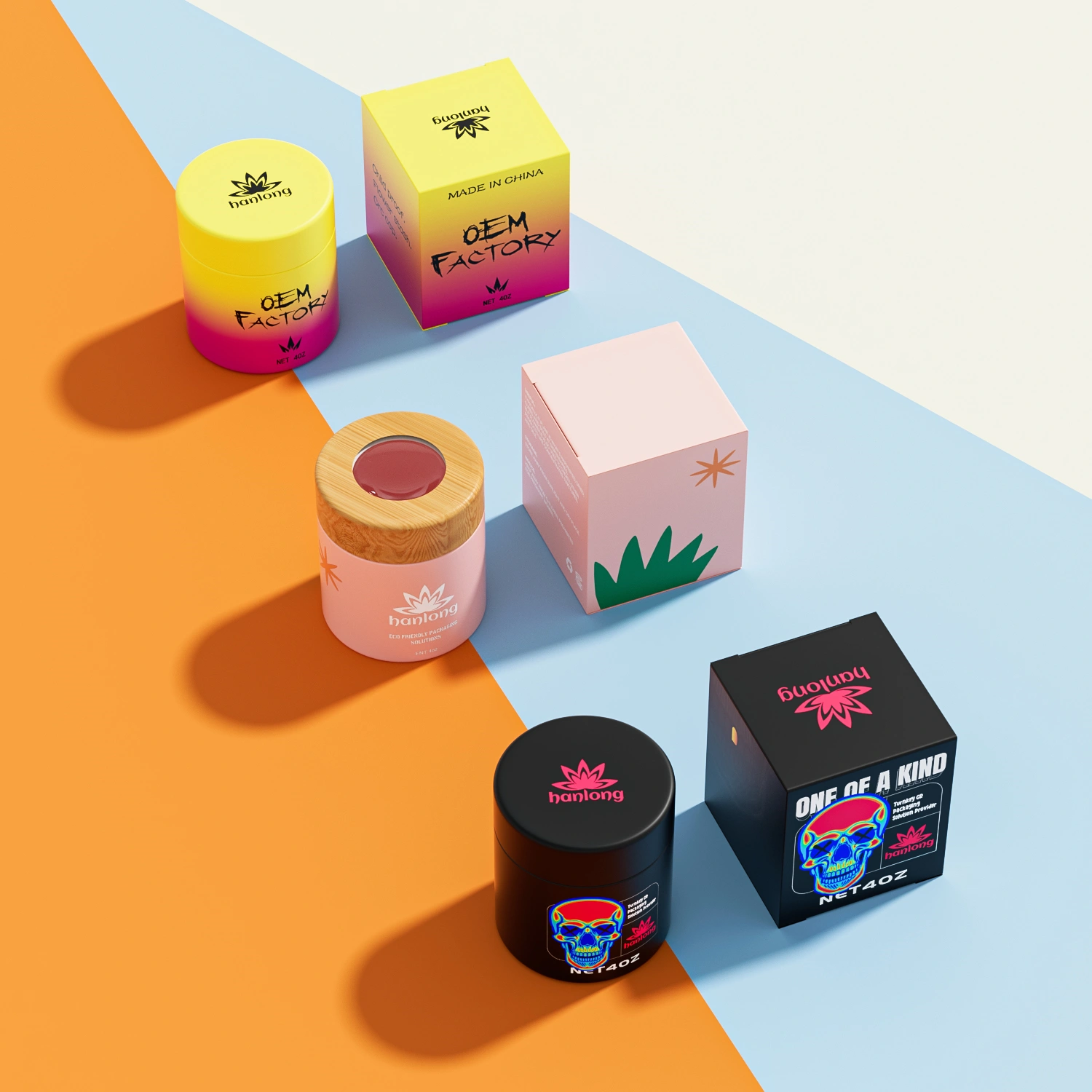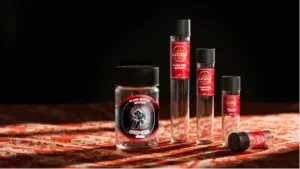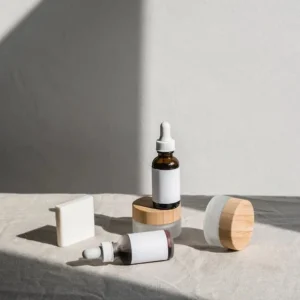The CBD-infused products market has experienced explosive growth in recent years, evolving from a niche segment to a mainstream wellness category. As we enter 2025, the market continues its upward trajectory, with the global cannabis-infused products sector growing from $27.37 billion in 2024 to $33.85 billion in 2025, representing a remarkable 23.7% compound annual growth rate (CAGR). This growth is fueled by increasing consumer awareness, expanding legalization efforts, and a growing acceptance of CBD as a natural wellness solution.
Within this broader market, CBD-infused tropicals represent a particularly vibrant and innovative segment. These products combine the therapeutic benefits of cannabidiol with tropical flavors, scents, and ingredients to create unique consumer experiences that evoke relaxation, escape, and wellness. From tropical-flavored gummies and beverages to exotic-scented topicals and skincare products, this category is capturing consumer imagination and market share.
The appeal of tropical themes in CBD products is multifaceted. For consumers seeking stress relief-currently the dominant function driving CBD beverage consumption-tropical elements evoke vacation-like sensations and mental escape. This psychological association enhances the perceived relaxation benefits of CBD, creating a powerful synergy between ingredient and experience.
As the CBD market continues to mature, we’re witnessing significant advancements in product formulation, delivery methods, and consumer targeting. Nanoemulsion technology is revolutionizing the industry by breaking CBD into tiny particles for faster, more efficient absorption, while sustainable practices and personalized experiences are becoming key differentiators in an increasingly competitive landscape. For businesses operating in this space, understanding the nuances of the tropical CBD market-from product development and regulatory considerations to packaging innovations and marketing strategies-is essential for capturing market share in what promises to be a $78.51 billion cannabis-infused products market by 2029.
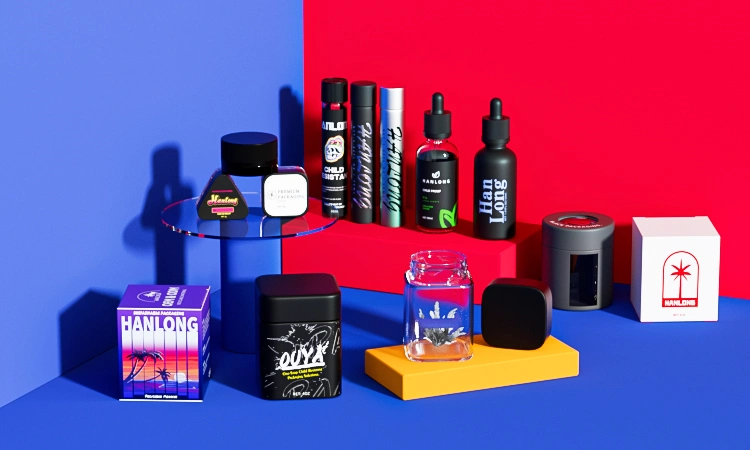
The Current CBD-Infused Tropical Products Landscape
The CBD-infused tropical products market in 2025 presents a vibrant and diverse landscape, with manufacturers leveraging exotic flavors, scents, and ingredients to create distinctive wellness experiences. This segment has evolved significantly, offering consumers a sensory escape while delivering the therapeutic benefits of cannabidiol.
Beverages
Tropical-themed CBD beverages represent one of the fastest-growing segments in the market. Companies like Crescent 9 are offering products such as their Tropical 5mg THC Seltzer, which combines 5mg THC with 4mg CBD in a refreshing tropical fruit and citrus flavor profile. These seltzers promise effects within 15 minutes and cater to consumers seeking alcohol alternatives with functional benefits.
The beverage category has expanded to include a wide variety of tropical options:
- Naturally flavored seltzers with mango puree and terpenes
- Refreshing tropical fruit blends that enhance the sensory experience
- Calming herbal infusions with exotic flavor profiles
With the global CBD-infused beverages market reaching USD 1.45 Billion in 2024 and projected to grow to USD 7.65 Billion by 2033 at a CAGR of 18.50%, tropical flavors are playing a significant role in driving consumer adoption.
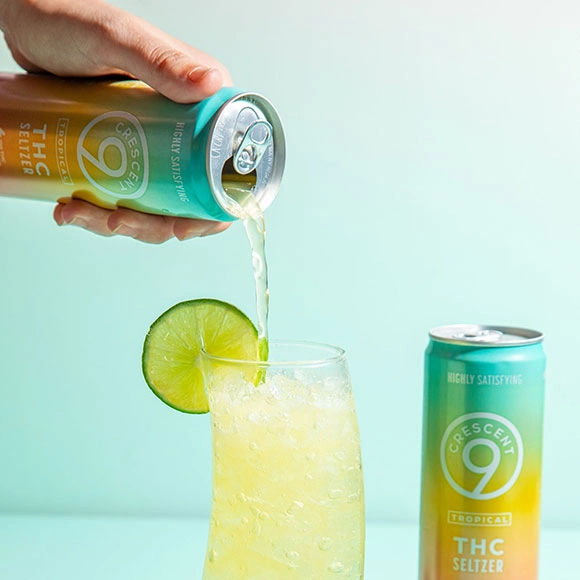
Edibles
Edibles dominate the CBD-infused products market, accounting for an estimated 33.6% share in 2025. This segment is growing at the highest CAGR of 35.2%, driven by increasing social acceptance and therapeutic applications. CannaAid’s Delta 9 + CBD Gummies Tropical Mix exemplifies the innovation in this category, offering a “tropical getaway” experience with exotic fruit flavors including pineapple, mango, kiwi, and guava. Each gummy delivers a balanced 30mg of Delta 9 THC and CBD, designed to provide relaxation and stress relief while tantalizing the taste buds.
The appeal of tropical-themed edibles extends beyond just flavor:
- They evoke vacation-like sensations and mental escape
- The psychological association enhances perceived relaxation benefits
- Exotic flavors mask the natural taste of CBD, improving palatability
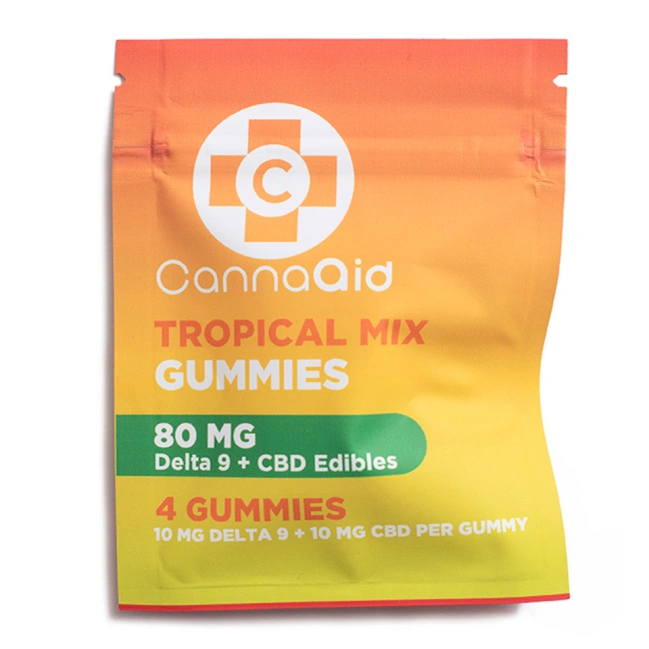
Topicals
CBD topicals represent another category embracing tropical elements. Companies like Joy Organics are developing premium topical products that incorporate botanical extracts and skin-loving oils. These products are designed for targeted application and deep hydration, making them ideal for post-workout recovery, daily skincare, or end-of-day relaxation.
The tropical-themed topical landscape includes:
- CBD-infused creams with exotic fruit extracts
- Massage oils featuring tropical essential oils
- Bath products with island-inspired fragrances
- Cooling sports creams with tropical botanical ingredients
These products appeal to consumers seeking both the therapeutic benefits of CBD and the sensory escape provided by tropical scents and ingredients.
Market Dynamics
The CBD-infused tropical products market is being shaped by several key factors:
Advanced Delivery Methods: Nanoemulsion technology is revolutionizing the industry by breaking CBD into tiny particles, ensuring faster and more efficient absorption. This technology is particularly important for tropical beverages and edibles, where consistent effects and bioavailability are crucial for consumer satisfaction.
Consumer Demographics: The market for tropical CBD products spans multiple demographic groups, with particular appeal to:
- Wellness-focused consumers seeking natural alternatives
- Younger adults drawn to innovative flavors and experiences
- Stress-relief seekers attracted to the escapist qualities of tropical themes
Regional Variations: While North America dominates the CBD market, tropical themes have universal appeal across regions. The Asia Pacific market is showing growing interest in functional wellness drinks with exotic flavors, while Latin America’s cultural connection to tropical ingredients creates natural market synergies.
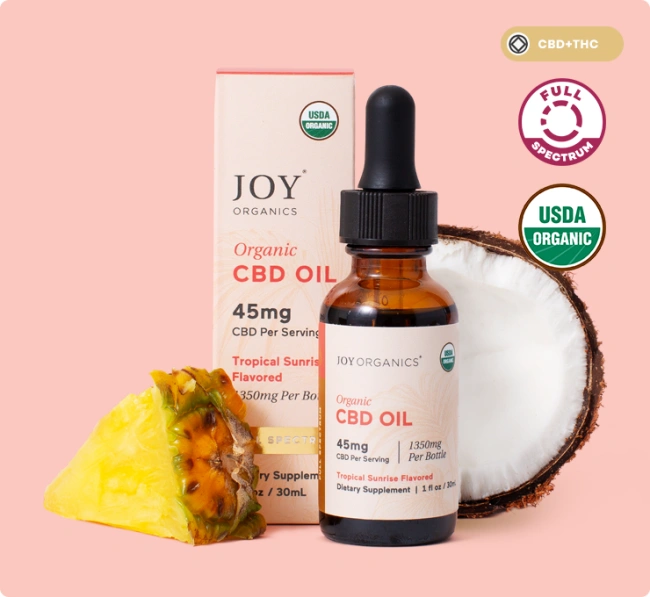
Regional Market Analysis of the CBD-Infused Tropicals Market
The global CBD-infused products market is experiencing significant regional variations in growth, adoption, and regulatory landscapes. Understanding these regional dynamics is essential for businesses looking to expand or optimize their tropical CBD product offerings across different markets.
North America: The Dominant Market Leader
North America currently holds the commanding position in the global CBD-infused products market, accounting for 59.5% of the market share in 2025. The region’s CBD-infused products market is estimated to be valued at USD 26.76 billion in 2025 and is projected to achieve the highest CAGR of 34.3% through 2032.
Several factors contribute to North America’s market dominance:
Accessibility: Widespread availability through multiple distribution channels
Technological advancements: Leading innovation in production and processing of CBD-infused products
Large consumer base: Growing acceptance across diverse demographic segments
Evolving perceptions: Increasing shift toward CBD consumption for both medical and recreational purposes
Medical awareness: Rising consumer knowledge regarding CBD’s potential health benefits
Within North America, the United States leads the regional market, with a projected CAGR of 17.5% and an expected market value of USD 25.7 billion by 2034. This growth is driven by favorable regulatory developments, strong investment in research and development, and expanding retail networks.
Europe: A Growing Market with Regional Variations
Europe represents the second-largest market for CBD-infused products, with Germany leading the regional growth. The European market is characterized by:
- Varying regulatory frameworks across countries
- Strong consumer interest in natural wellness solutions
- Growing acceptance of CBD for therapeutic applications
- Increasing retail presence in countries with progressive regulations
The market for tropical-themed CBD products in Europe shows particular promise in regions with cultural connections to tropical environments or strong wellness tourism sectors, such as Spain, Portugal, and parts of Southern Europe.
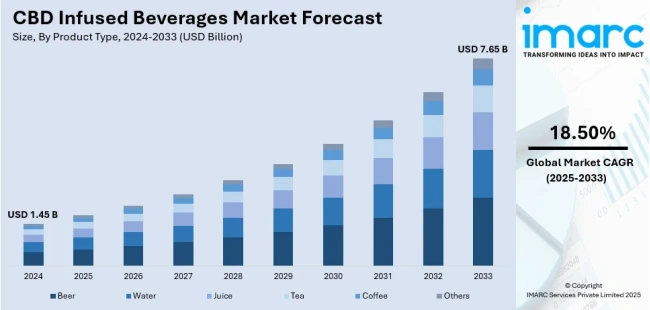
Latin America: Evolving Regulatory Landscape
The Latin American CBD-infused products market is expanding as regulatory frameworks evolve and consumer awareness increases. Brazil leads the regional growth, with several market characteristics:
- Legalization of CBD for medicinal and wellness use in select countries
- Growing functional beverage market expected to grow at a 7.4% CAGR from 2020 to 2024
- Strong cultural connection to tropical ingredients creating natural synergies for product development
- E-commerce and specialty health stores serving as key distribution channels
The region’s natural abundance of tropical ingredients provides a competitive advantage for local manufacturers developing authentic tropical CBD products.
Middle East and Africa: Emerging Potential
The Middle East and Africa (MEA) CBD-infused products market is showing promising growth, with Saudi Arabia leading regional development. Key market drivers include:
- Regulatory advancements in progressive countries like South Africa and the UAE
- Rising wellness trends and growing consumer interest in functional beverages
- Higher disposable incomes and increasing urbanization
- Integration of CBD-based drinks in the hospitality and tourism industry
South Africa’s National Cannabis Master Plan has supported 23 SMMEs in developing over 40 CBD-infused and cannabis-based products, including nutraceuticals, cosmeceuticals, and herbal remedies, demonstrating the region’s commitment to industry development.
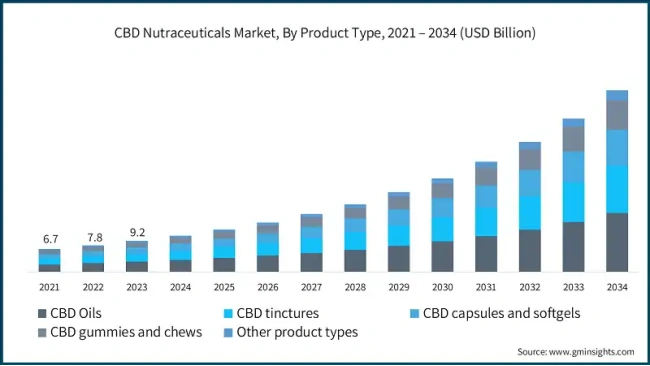
Trends Shaping the CBD-Infused Tropical Products Market in 2025
Advanced Delivery Methods
Nanoemulsion technology is revolutionizing the CBD-infused tropicals market in 2025 by breaking CBD into tiny particles for faster, more efficient absorption. This technological advancement ensures consistent potency in beverages and edibles, addressing one of the key challenges in CBD products: bioavailability. Brands like Seabedee are incorporating this technology into their tinctures and beverages, providing users with quicker onset times and more consistent results.
Water-soluble CBD technology is another significant innovation enhancing absorption rates in tropical beverages. These advancements are particularly important for tropical-themed products where consistent effects and reliable experiences are crucial for consumer satisfaction and repeat purchases.
Personalization and Customization
Personalized CBD products are dominating the market in 2025, with 70% of consumers willing to pay more for customized health products. This trend is driven by AI and data analytics, allowing companies to offer tropical-themed edibles, oils, and formulations tailored to individual needs such as sleep support and anxiety reduction.
Advanced inventory management systems enable businesses to track personalized products and their movement, while enhanced reporting capabilities help brands understand consumer preferences for specific tropical flavors and formulations.
Innovative Product Formulations
The CBD market in 2025 is seeing significant innovation in product formulations, particularly with the rise of minor cannabinoids. While CBD remains the star, compounds like THCV, CBC, and CBN are gaining traction for their unique therapeutic benefits:
THCV (Tetrahydrocannabivarin): Known for appetite-suppressing effects and energy-boosting properties
CBC (Cannabichromene): Praised for anti-inflammatory and mood-enhancing benefits
CBN (Cannabinol): Widely regarded as the “sleep cannabinoid” for relaxation and rest
These minor cannabinoids are being combined with tropical flavors and ingredients to create targeted solutions for specific wellness goals. Tropical blends featuring mango, pineapple, and passionfruit are gaining popularity, as are botanical infusions with herbs, floral notes, and spices.
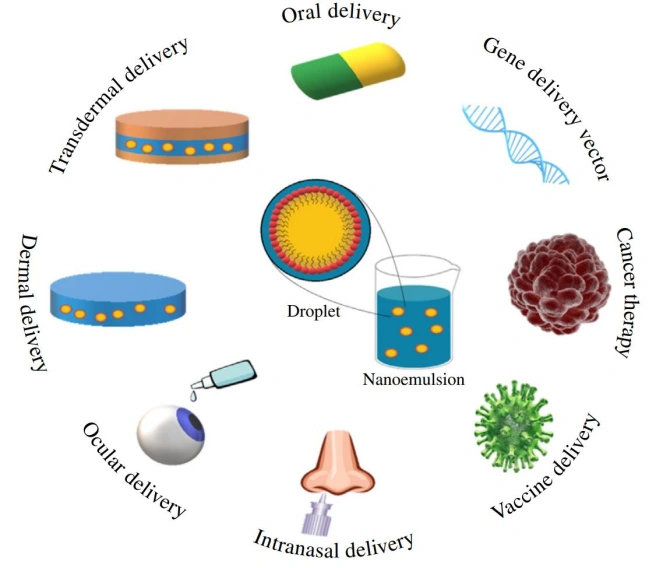
Packaging Innovations and Branding Strategies
Sustainable Packaging Trends
The global push for sustainable packaging has intensified in the CBD-infused tropicals market. By 2025, eco-friendly materials have become standard, with brands utilizing recycled cardboard, biodegradable plastics, and compostable plant-based fibers. This shift is driven by consumer preferences, as awareness of environmental impacts continues to grow, making sustainability a key differentiator for brands in the competitive CBD market.
Design Aesthetics
Minimalist designs with earthy color palettes and subtle branding are gaining significant traction in 2025. CBD packaging that incorporates a natural look and feel appeals to consumers seeking wellness-oriented, organic products. Brands are moving away from cluttered designs with loud colors and flashy graphics, opting instead for packaging that reflects purity and simplicity.
This trend is particularly prominent in the premium CBD market, where understated elegance is key to attracting discerning customers who value quality and sophistication in their tropical-themed CBD products.
Innovative Shapes and Structures
Standard packaging shapes are increasingly being replaced by distinctive designs that capture attention and convey brand personality. In 2025, CBD brands are experimenting with unique shapes for containers, custom boxes, and other packaging elements to stand out on crowded retail shelves.
Sleek, modern shapes and customized containers tailored to each product’s unique needs are becoming the norm. For instance, tropical CBD oils may come in curved, ergonomic bottles that are easier to handle, while tropical-flavored CBD gummies might be packaged in triangular boxes or hexagonal tins that add an element of intrigue.
Augmented Reality Integration
Augmented Reality (AR) has become a game-changer in the CBD packaging space in 2025. By scanning QR codes on CBD product packaging, customers can unlock virtual content, such as:
- Tutorials on how to use the product
- Information on the benefits of CBD
- Behind-the-scenes looks at sustainable practices
- Virtual experiences of tropical environments that complement the product theme
This interactive packaging experience enhances consumer engagement and provides valuable education about CBD products, helping to overcome lingering stigma and confusion about cannabidiol.
Transparency in Labeling
Transparency has become paramount for consumers of CBD products in 2025, who scrutinize ingredient lists and sourcing information. Brands are highlighting sourcing details, ingredient transparency, and third-party lab testing results directly on their packaging.
QR codes provide convenient links to lab reports, while packaging design increasingly reflects a commitment to honesty and authenticity. Labels prominently feature clear ingredient lists, potency details, and information on sourcing practices, along with certifications such as organic or cruelty-free to communicate quality and integrity.
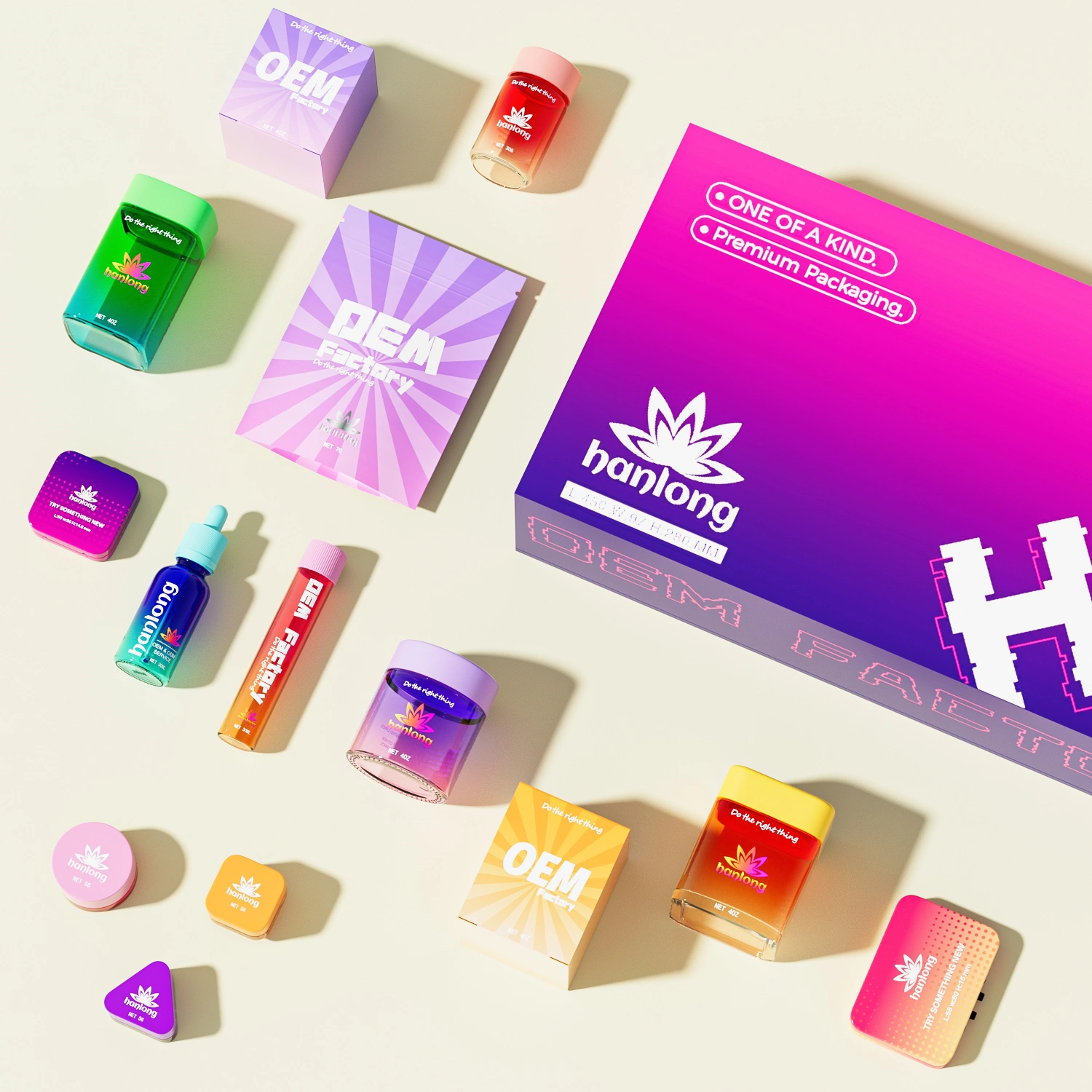
Marketing and Distribution Strategies
Digital Marketing Approaches
In 2025, CBD marketers are navigating platform-specific restrictions while creating unified brand presences across multiple channels. While Google still bans cannabis ads on Search and Display, brands are finding success with SEO-optimized websites, blog content, and geo-targeted landing pages.
Social media strategies for tropical CBD products focus on education and lifestyle messaging that avoids direct product promotion. Video content, behind-the-scenes tours, and employee spotlights help humanize brands while staying compliant with platform restrictions.
Content marketing has become essential, with educational blog posts informing audiences about CBD and its tropical variants, customer testimonials showing product benefits, and product guides explaining how to best use tropical CBD formulations.
Retail Distribution Channels
The CBD-infused beverages market exemplifies the expanding retail presence of tropical CBD products, with products becoming increasingly available through multiple distribution channels:
- Online retail platforms
- Specialty CBD retailers
- Mainstream supermarkets and convenience stores
- Gyms, yoga studios, and fitness centers
- Health food stores
Regulatory shifts are facilitating entry into mainstream retail, with established beverage companies forming partnerships to strengthen distribution networks. This increased visibility in physical retail locations is enhancing consumer trust and accessibility.
E-commerce Strategies
The online segment currently dominates CBD distribution, offering consumers convenient access to a wide range of tropical-themed products along with detailed information about ingredients, dosing, and potential benefits. E-commerce is particularly crucial in regions with limited physical retail options or stricter regulations.
Email marketing has become a direct channel for connecting with and nurturing leads. Brands use emails to convince potential customers to buy tropical CBD products by sharing informational content and offering discounts, while also turning existing customers into repeat buyers.
Experiential Marketing
Localized and hyper-targeted campaigns have become essential due to the patchwork nature of cannabis legislation. Geofencing technologies allow brands to serve targeted promotions to users within specific regions-particularly near licensed dispensaries or events.
Successful experiential marketing examples include:
- Sponsoring local wellness fairs
- Collaborating with regional artists for branded mural unveilings
- Offering zip code-specific discounts through SMS
- Hosting educational pop-ups featuring tropical CBD products
These efforts demonstrate how hyper-local content and community involvement can turn compliance challenges into competitive advantages.
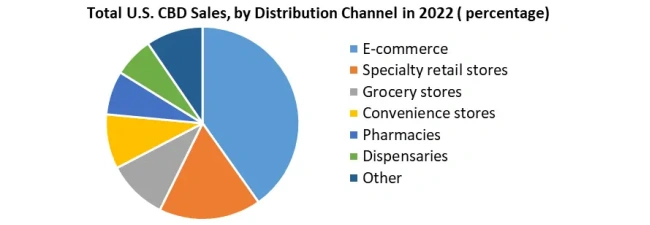
Business Models and Revenue Strategies
Direct-to-Consumer Models
Direct-to-consumer (DTC) models have become increasingly important for CBD brands in 2025, allowing companies to build stronger relationships with customers while maintaining control over the shopping experience and collecting valuable first-party data.
Subscription revenue opportunities have expanded, with many brands offering tropical CBD product subscriptions that provide customers with regular deliveries at discounted rates. These subscription models improve customer retention and provide predictable revenue streams.
Community building around tropical wellness themes has become a key strategy, with brands creating exclusive content, special events, and loyalty programs to foster long-term customer relationships.
Wholesale and White Label Opportunities
The white-label and private-label CBD market has expanded significantly in 2025, with companies like Essentia Pura specializing in manufacturing high-quality products for businesses launching their own unique CBD brands.
This model allows companies to enter the tropical CBD market without investing in production facilities, leveraging the expertise of established manufacturers with cutting-edge hemp extraction methods and compliance knowledge.
Co-branding partnerships between CBD producers and established beverage or wellness companies have accelerated product development and retail penetration. For example, in January 2025, Green Monké collaborated with Cookies to launch hemp-derived THC beverages in select U.S. states.
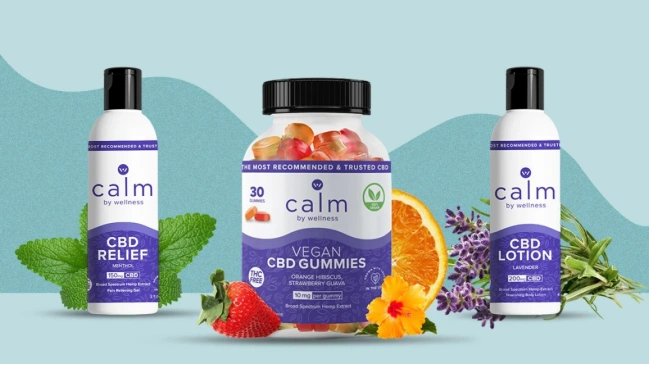
Shift from Ingredient-First to Benefit-First Messaging
A key strategic shift in 2025 is the move from ingredient-first to benefit-first messaging. Brands that focus solely on “CBD as the feature” without addressing meaningful problems are struggling to stay relevant, while successful companies are repositioning CBD as part of a solution, not the solution itself.
Consumers in 2025 demand specific benefits-pain relief, sleep support, anxiety management-not vague claims of “balance” or “wellness”. This shift requires creating niche, targeted tropical CBD products tailored to specific outcomes and engaging skeptical audiences with evidence-backed claims and user-first design. The brands winning in 2025 are not those shouting loudest about CBD, but those understanding their audience’s needs and speaking directly to them with clarity, honesty, and relevance.
As the CBD market matures in 2025, the hype phase has ended, and strategic execution has become essential. With commoditization already underway, only brands that evolve-shifting from preaching to the converted to serving the skeptical-are capturing long-term value in the increasingly competitive tropical CBD products landscape.
Conclusion
The CBD-infused tropicals market stands at a fascinating crossroads in 2025, evolving from a niche segment into a sophisticated industry that blends wellness benefits with sensory experiences. As consumers increasingly seek products that deliver both functional benefits and moments of escape, tropical-themed CBD offerings have emerged as perfect vehicles for this dual promise-providing the therapeutic potential of cannabidiol wrapped in the sensory delight of exotic flavors and scents. With the global CBD market projected to reach $291.39 billion by 2032, businesses that can successfully navigate the complex regulatory landscape while delivering innovative, sustainable, and effective tropical CBD products stand to capture significant market share.
For businesses looking to thrive in this dynamic landscape, success will hinge on several critical factors: regulatory agility to navigate evolving legal frameworks across regions, authentic brand storytelling that resonates with increasingly sophisticated consumers, sustainable practices that align with growing environmental consciousness, and product innovations that deliver measurable benefits. Those who can master these elements while creating tropical CBD experiences that transport consumers to moments of wellness and escape will not just participate in this growing market-they’ll help define its future.
